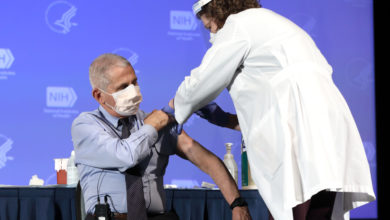
I’ve seen several friends posting memes such as this on Facebook recently. The idea seems to be that university students should stop seeking scholarships, debt relief, or debt forgiveness and instead consider joining the Armed Forces in exchange for advanced education.
On the surface, the idea might seem interesting. Trade public service for secondary education, benefiting society and the individual, right? Isn’t that the idea behind the GI Bill and related legislation? I myself spent 5 years volunteering with the American Red Cross during undergraduate and graduate school, and I’d have loved to have seen that reflected in some form of financial compensation.
Unfortunately, the numbers just don’t work.
The principle is that students should offer themselves for military service in exchange for financial aid. But what about those students who are mentally, physically, or philosophically unable to serve in the military? Sorry, folks, no university for you.
US universities currently graduate approximately 3.3 million students per year. Approximately 32,000 (1%) of those are in ROTC and therefore already committed to military service. The NCAA reports that 290,000 students receive athletic scholarships. Let’s be generous and estimate that those students get enough support to not need further support. Let’s also ignore the fact that there is likely a significant overlap between athletes and those students considering a military career. So we’re left with just shy of 3 million students graduating each year.
Not all of those students require financial aid. According to both The College Board and TICAS, two-thirds of students require financial aid for all or part of their university education. That puts us at 2 million students graduating each year with financial burden and eligible for the proposed military service.
The US Armed Forces currently employ roughly 1.3 million active duty soldiers, sailors, and pilots, plus slightly less than 1 million reservists. So first off, you’re going to have to plan for a doubling of the Armed Forces, with all the increase in salary, equipment, infrastructure, bases, logistics, etc. that this entails. However only 23,500 of those are O-1 (2nd Lieutenant or Ensign, i.e. entry-level officers), and 40,380 are E-1 (Private, Seaman Recruit, or Airman Basic, i.e. entry-level enlisted personnel)(ROTC and Academy graduates generally enlist as an officer, but a student doing service first would generally be enlisted, so we need to consider both levels). Needless to say, dumping two million new O-1 and E-1 into the system would create chaos. Even if only 10% of students took this route, we’d have an extra 200,000 recruits to handle.
Ok, let’s assume that we can somehow manage the massive influx of personnel, give them uniforms, beds, and equipment, assign them to bases or ships, and find useful work for them to do. Let’s continue to assume that only 10% of students actually take us up on the offer and enlist. A Reuters analysis found that equipment alone costs $17,500 per soldier, or $3.5 billion in equipment. An army E-1 earns $18,378 per year, and an O-1 earns $34,862. That’s another $4.7 billion in salaries. We won’t even consider what it might cost to build additional bases, tanks, Humvees, MRAPS, aircraft, ships, field kitchens, hospitals, etc. to handle these new recruits. We also haven’t accounted for benefits and healthcare, which generally add 50-100% to the cost of any employee (including military personnel). And we haven’t even paid for tuition yet.
The GI Bill and its siblings authorize up to $21,084.89 per year per student in a public university. Over a four-year degree, that’s a public debt of just over $84,000 per soldier. Continuing our assumption that 10% of students use the GI Bill, that’s $16.8 billion in payouts.
Thus far we’ve expended $25 billion per year so that 10% of graduates can avoid debt. According to TICAS, 69% of graduates carry debt, averaging $28,950 per student. Now let’s be fair and assume that students who don’t need financial aid and weren’t planning military service aren’t going to jump on the bandwagon. So all of our 200,000 students fall into that 69% group, and would carry a total of $5.8 billion in debt. Wait, how much did we spend? That’s almost a 5:1 ratio of outlay to gain.
As I said earlier, we’ve ignored the full cost of equipping and housing all these new recruits. We’ve also failed to account for the fact that military personnel don’t contribute to the economy like civilians; they aren’t starting new companies, developing new ideas, making products, constructing buildings, or any one of a myriad ways that we all build economic value. Taking thousands of bright minds and energetic bodies out of the economy would hurt the entire system.
Let’s be clear: I’m not saying that military service isn’t right for some people, nor am I saying that it lacks value. My father, both uncles, and my grandfather all served in the armed forces. I have many friends who have served. I completely and wholeheartedly support the GI Bill as a way to say thank you to those who have served. Military service can convey valuable experience in management, logistics, and planning. It’s just not right for everyone, and frankly we couldn’t afford it if we tried. It’s a weak meme that hasn’t been thoroughly considered, and completely fails to offer the promised solution. Move along.





What sort of returns on money spent on military equipment do we see in economic stimulation, compared with just paying student loans?
That’s a really complex question, as we’d need to compare military ROI (already difficult to estimate) against the return of freeing graduates from debt, thereby enabling them to spend their money elsewhere in the economy. One estimate from 2011 suggests that military spending has a 50% ROI. Compare that to NIH spending, which has an estimated 120% ROI, or tourism, with estimates ranging from 100 to 1000%. Considering a typical student loan is in the vicinity of 10% interest, it’s not hard to imagine that the military spending is still a poor choice.